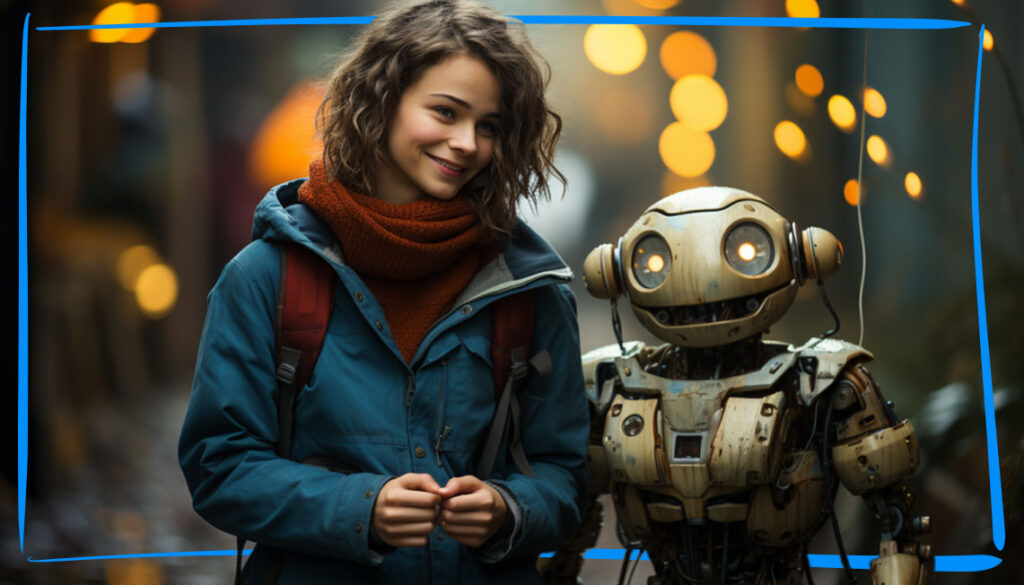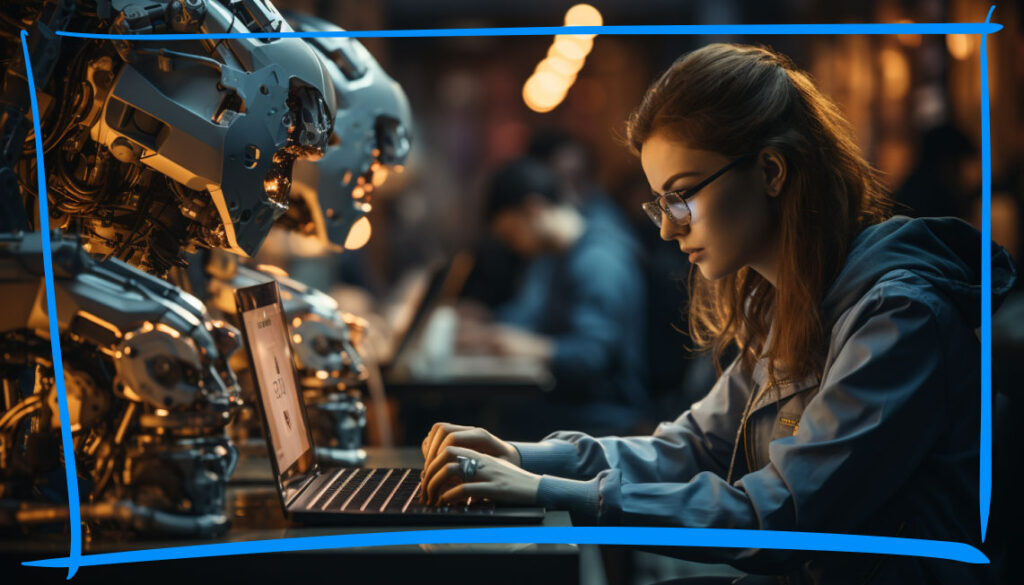As machines become more sophisticated, many professionals fear they could replace human roles, spelling a seismic shift in the job market.
These fears have permeated even creative fields like graphic design, traditionally considered safe from automation due to their need for human intuition and creativity. But as AI tools grow increasingly capable, the question arises: could AI take over the graphic design profession? This article aims to provide a balanced view of this heated debate.
The Mechanics of AI in Graphic Design
One can’t discuss AI in graphic design without mentioning Generative AI. This groundbreaking technology creates new content from scratch, sparking considerable interest and apprehension among graphic designers. It’s the driving force behind tools that can generate everything from logos to full-page layouts at a pace no human could match.
However, for all their speed and efficiency, these AI tools have limitations. They often lack the creative flair, the understanding of context, and the cultural nuances that a human designer brings to their work. While they can execute tasks, the truly creative aspects of design still seem to be the preserve of humans.
The Potential Threats of AI in Graphic Design
The graphic design industry is no stranger to the rise of AI, with numerous companies adopting AI tools for design tasks. However, the success of these applications varies significantly. While AI has proven adept at automating simple tasks like creating design templates, it struggles when faced with unique, complex projects that require human intuition and creativity.
Experts continue to ponder the future of AI in graphic design, with forecasts leaning toward a negative impact. They suggest that while AI might automate routine, simpler tasks, the human designer’s role will remain paramount, particularly for their critical thinking, unique artistic sensibilities, and ability to connect with human emotions.
On the other hand …
The Bright Side: How AI Could Enhance the Graphic Design Profession
Far from being a mere threat to designers, AI holds enormous potential as a creative partner. AI can take over mundane, repetitive tasks that often bog down designers, liberating them to focus on the more exciting and innovative aspects of their work. This could foster a new age of creativity in the industry, propelled by the synergy of human and machine.
Furthermore, the amalgamation of AI’s speed and efficiency with human creativity could lead to superior designs. Collaborative efforts between AI and human designers could push the boundaries of what’s possible, opening up exciting new avenues for exploration in graphic design.

Developing AI Literacy: The Future-proof Skill for Graphic Designers
As AI becomes an integral part of the graphic design landscape, understanding how to leverage it effectively becomes crucial. AI literacy – not just the ability to use AI tools, but to understand their workings and how to apply them creatively – could become an indispensable skill for designers.
There are many ways for designers to gain AI literacy. They can start by exploring various AI tools available in the market, understanding their capabilities, strengths, and weaknesses. Online courses, webinars, and AI-focused workshops are also valuable resources.
Becoming AI-literate is more than a defensive move against job automation; it’s a proactive step towards staying relevant and competitive in the future job market. This literacy can empower designers to navigate AI developments confidently, staying ahead of the curve and even capitalizing on new opportunities that AI brings to the table.
Changing Roles: From Traditional Graphic Designer to AI-Aided Designer
The advent of AI signifies a shift in roles within the design industry. Designers might find themselves transitioning from traditional design tasks towards more AI-centric roles, like customizing and controlling AI tools, and providing creative direction for AI-generated designs.
Real-world examples from companies like Adobe and Canva illustrate this transition. Designers at these firms are becoming AI-aided designers, harnessing AI’s power to augment their creativity rather than replace it. They represent a new breed of designers who merge technology with creativity to push the boundaries of what’s possible in design.
Alternate Careers: Harnessing Design Thinking Skills Beyond Graphic Design
In the face of advancing AI, another route for graphic designers is to leverage their skills in roles that value design thinking and creativity but extend beyond traditional graphic design. The human capacity to think critically, empathize, and solve problems creatively – traits that AI currently cannot replicate – are in high demand across industries, opening up a host of alternate career paths.
Product design is a flourishing field that requires a deep understanding of users, the ability to problem-solve creatively, and an eye for aesthetic detail. Similarly, user experience (UX) and user interface (UI) design roles often rely on the ability to create intuitive, visually appealing digital experiences, calling upon skills inherent in graphic designers.
Roles in creative strategy and brand management also offer opportunities for designers to apply their creativity on a larger scale. These positions require the ability to think visually, understand a brand’s personality, and communicate its identity effectively – skills which graphic designers possess in abundance.
In education and training sectors, there is a growing need for design educators who can teach the next generation of creatives. This route allows designers to share their insights and experiences, influencing the creative journeys of others while continuously learning and growing in their own right.
Finally, design thinking – the human-centered, problem-solving methodology central to design – is increasingly sought after in business and innovation consulting. Companies value individuals who can use design principles to devise innovative solutions and drive business growth.
Pivoting careers doesn’t mean abandoning one’s passion for design. Rather, it’s an opportunity to apply the same creativity and design thinking in a new context, bringing fresh perspectives and driving innovation. With adaptability and continuous learning, graphic designers can not only survive in an AI-influenced world but thrive in it.
The key for designers in this shifting landscape is to adapt, evolve, and learn.
A Complex Future
The rise of AI in the graphic design industry presents a complex picture, with potential risks counterbalanced by promising opportunities. While AI may encroach on certain design tasks, it also offers the prospect of enhancing the creative process, fostering innovation, and opening up new roles for designers.
The key for designers in this shifting landscape is to adapt, evolve, and learn. By embracing AI and developing AI literacy, they can turn a potential threat into a powerful ally. The future of graphic design in an AI-inclusive world, therefore, is not just secure; it’s charged with exciting possibilities that could redefine the very fabric of the profession.



